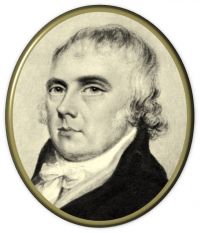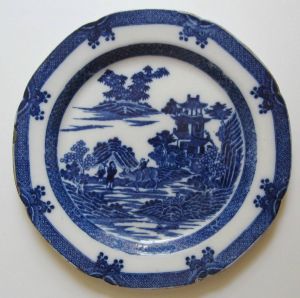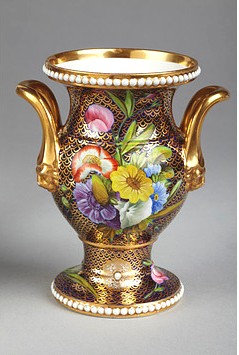|
 The year was 1776, and Josiah Spode became the first of his family to own a pottery factory. This achievement led to his designation as "Josiah Spode I." The conditions of his partnership with Thomas Mountford precluded Spode I from personally operating his new business until their agreement ended in November 1779. His sons Josiah II and Samuel were available to run the pottery and had been trained by their father for this role. In 1778 Josiah II and his young family moved to London to develop their wholesale/retail business. Samuel took over the newly acquired pottery's day-to-day operations until his father could assume control. The year was 1776, and Josiah Spode became the first of his family to own a pottery factory. This achievement led to his designation as "Josiah Spode I." The conditions of his partnership with Thomas Mountford precluded Spode I from personally operating his new business until their agreement ended in November 1779. His sons Josiah II and Samuel were available to run the pottery and had been trained by their father for this role. In 1778 Josiah II and his young family moved to London to develop their wholesale/retail business. Samuel took over the newly acquired pottery's day-to-day operations until his father could assume control.
After November 11, 1779 Josiah Spode I could finally devote his attention to his own pottery works. Samuel may have continued to work alongside his father or he might have sought his fortune in London with his brother. At the church of St. Mary in Marylebone, London, Samuel married Sarah Garner on December 3, 1783. Spode expected Samuel to make his own way in the world. Soon after his marriage he returned to Staffordshire, occupied a pottery factory in Lane End and an elegant house provided by his father.
Josiah Spode I was an extremely accomplished and innovative potter. He worked during the most exciting decades of Staffordshire pottery history and made not only the standard products of his day, but was also involved with the introduction of two products that profoundly changed the history of English ceramics: underglaze blue printing on earthenware and the perfection of bone china.  
|



 The year was 1776, and Josiah Spode became the first of his family to own a pottery factory. This achievement led to his designation as "Josiah Spode I." The conditions of his partnership with Thomas Mountford precluded Spode I from personally operating his new business until their agreement ended in November 1779. His sons Josiah II and Samuel were available to run the pottery and had been trained by their father for this role. In 1778 Josiah II and his young family moved to London to develop their wholesale/retail business. Samuel took over the newly acquired pottery's day-to-day operations until his father could assume control.
The year was 1776, and Josiah Spode became the first of his family to own a pottery factory. This achievement led to his designation as "Josiah Spode I." The conditions of his partnership with Thomas Mountford precluded Spode I from personally operating his new business until their agreement ended in November 1779. His sons Josiah II and Samuel were available to run the pottery and had been trained by their father for this role. In 1778 Josiah II and his young family moved to London to develop their wholesale/retail business. Samuel took over the newly acquired pottery's day-to-day operations until his father could assume control.
